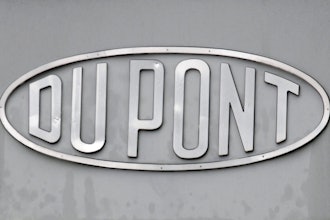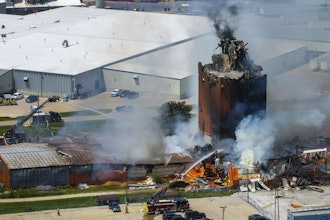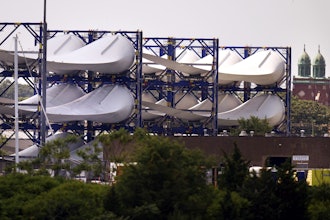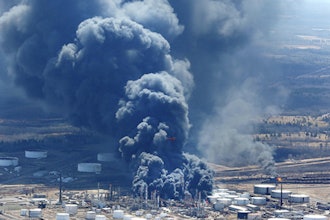www.newson-gale.com Page 1 of 6
Inquiry > Click here to submit a
product related query or a request
for quotation.
1.1 Conductive hoses connected to ungrounded
vacuum trucks and tanker trucks.
With no static grounding protection in place a truck conducting
a vacuuming or loading operation will become electrostatically
charged as it has no means of preventing the accumulation of
static electricity on its tank and chassis. Because the metal
connections (couplings) of the hose should be electrically
continuous with the truck, the truck will also transfer charges to
the hose, thereby causing the accumulation of static electricity
on the hose as well. The quantity of charge transferred to the
hose will be high as ungrounded trucks can build up very large
electrostatic voltages in a short space of time.
Charge accumulation on the conductive metal components of
the hose, like couplings or nozzles, are a particular concern as
these are the parts most likely to be closest to any combustible
vapours or dusts during operations and may seek to nullify their
electrical imbalance by sparking onto objects like operators,
tank walls or pipes. If a combustible atmosphere is present in
the spark discharge gap ignition of the atmosphere is highly
probable.
Discharges of static electricity from hoses are known to
cause the ignition of combustible atmospheres during the
transfer of material to or from vacuum trucks and tanker
trucks.
There are normally three main reasons why discharges of static
electricity from hoses can occur. One reason is that standard
non-conductive hoses are incorrectly used to transfer material.
Non-conductive hoses are capable of accumulating and
retaining high levels of static charge which can result in
incendive brush discharges from the hose itself, or the charging
of isolated conductive objects attached to the hose like a nozzle
or coupling that can discharge a spark themselves. It is
generally accepted practice within the hazardous process
industries that non-conductive hoses should not be used to
transfer potentially combustible liquids and powders and
numerous standards and industry association publications repeat this recommendation.
Another common reason for static spark discharges from hoses results from connecting conductive hose, or interconnected conductive
hose sections, to a vacuum truck or tanker truck that does not have a verified static ground connection. The third most common reason
for static spark discharges from hoses is where the conductive components of the hose structure become isolated during normal activity.
Both the second and third modes of electrostatic discharge are the most relevant to the hazardous process industries, and are scenarios
where improper use of conductive hoses can lead to the accumulation and discharging of static electricity within a combustible
atmosphere.
Static Discharge
Ignition of Combustible Atmosphere
Figure 1. Four hose sections joined together in a vacuum tanker operation with
®an OhmGuard hose tester testing the first hose section (blue cable).
W
h
it
e
P
a
p
e
r
Author Details:
Mike O’Brien, Managing Director for Newson Gale
If you have any questions relating to the topics discussed
in this article, please contact .Newson Gale
www.newson-gale.com
In one reported incident a vacuum truck was sucking off-
specification toluene from a below grade sump and although
the hose was conductive, the truck to which it was attached did
not have a verified static ground connection. The hose itself
consisted of a metal wire helix embedded in the hose tubing
which bonded the hose couplings but given the high level of
voltage induced on the hose via the ungrounded truck, a static
spark was discharged from the metal wire helix of the hose,
across the hose tubing and onto the metal rim of the sump. The
resulting spark ignited the toluene vapours leading to a fire [1] .
1.2 Damaged conductive hoses connected to
grounded vacuum trucks and tanker trucks.
A more insidious hazard is situations where the tanker truck has
a static ground connection that is verified with either a truck
mounted or rack mounted grounding system, but the hose(s)
connected to the truck has lost its electrical continuity resulting
in the isolation of a metal component somewhere in its
structure. A typical example of this would be when the metal
wire helix of the hose becomes isolated from an end fitting like a
hose coupling or a nozzle.
Metal wire helixes are commonly used to reinforce the hose
structure against transfer pressures and bending kinks.
Another common function of metal wire helixes is to bond end
fittings to provide the necessary end-to-end electrical
continuity that will prevent the accumulation of static electricity
on the hose. If the metal helix, through normal industrial “wear
and tear”, breaks or detaches from hose couplings or nozzles,
these components now have the capacity to accumulate
enough charge and enough energy to ignite a combustible
atmosphere. If a hose section with an isolated coupling is fitted
between other hose sections, the other sections are isolated
from the grounded truck also which could lead to multiple
components becoming electrostatically charged near to, or
within, the potentially combustible atmosphere. In this situation
the isolated hose sections will become charged due to contact
with the moving liquid or powder.
Another important consideration is hoses fitted with two metal
wire helixes, where one helix is present on the outer surface of
the hose and a second helix is present on the inner surface of
the hose. In some hose designs the inner helixes are not
bonded to the hose end fittings and it is important to ensure that
such helixes cannot discharge sparks onto the end fittings or
operator, especially when the hose is removed at the end of a
transfer operation when a combustible atmosphere may be
present in the hose or the area surrounding the hose.
A hose fitted with an internal metal wire helix caused a fire
through a discharge of static electricity, and in addition to the
wire helix being broken, both end couplings were not designed
to be connected to the inner metal helix. Quoting from
“Avoiding Static Ignition Hazards in Chemical Operations”,
AIChE/CCPS, Britton, L.G., 1999 [2]:
“A fire was reported during draining of toluene from a road
tanker through such a hose and after the event it was found that
the inner spiral was not only broken but was not designed to be
bonded to the end connectors. Two post loading toluene fires
occurred with a similar hose as the disconnected hoses were
being handled by operators.”
2.0 Industry standards and recommended
practice.
To ensure that the hoses used on vacuum trucks and road
tanker trucks are not an electrostatic ignition source in a
hazardous area there are numerous standards and
recommended practices that describe the required electrical
continuity of hoses. However, owing to the various hose
construction types and established industry sector “norms”,
there are a range of electrical continuity values that preclude a
“one size fits all” approach to ensuring a hose is safe to use in a
potentially combustible atmosphere.
By far, the most common type of hose used on vacuum trucks
and tanker trucks are hoses that contain metal wire helixes that
may be sandwiched between layers of hose tubing or may be
present on the inner or outer surface of the hose, or both.
Page 2 of 6
Static Discharge
Ignition of Combustible Atmosphere
®Figure 2: Examples of a gantry mounted (Earth-Rite RTR) and tanker
®mounted (Earth-Rite MGV) static ground verification system.
www.newson-gale.com
The following table lists several standards and industry
association publications that outline the conductivity
requirements for hoses. The respective recommended values
of hose resistance are derived for an equivalent 25 ft. length
of hose.
In reality, many companies specify their own internal inspection
regime that requires periodic end-to-end electrical continuity
testing of their hoses. Periodic testing is normally performed
every 6 to 12 weeks by a trained technician who will use a
multimeter to measure and record the test results. The normally
accepted end-to-end resistance “PASS” benchmark for
individual hose sections with metal helixes is 10 ohms or less.
Depending on the test results the technician will either allow the
hose back into service, schedule the hose for a repair or
remove the hose from service altogether. Quoting from
CLCTR: 60079-32-1 (ref. Table 1):
Page 3 of 6
Table 1: Standards and industry publications that address hazards related to electrostatic charging of hoses.
61 x 10 ohms per 100 ft. of hose.
250 K ohms
API 2219 “Safe Operation of Vacuum Trucks
in Petroleum Service.”
1000 ohms per metre of hose.
7600 ohms
CLC/TR: 60079-32-1 “Explosive atmospheres -
Part 32-1: Electrostatic Hazards -Guidance”
100 ohms per assembly (hose
section) for hose with metal helix. 100 ohms
ISO 8031: “Rubber and plastic hoses and hose
assemblies - determination of electrical resistance
and conductivity”
10 ohms NFPA 77 “Recommended Practice on Static
Electricity”
For vacuum truck operations: “use conductive
hose and fittings as per API 2219”...”special
considerations and controls are required to ensure
bonding integrity is maintained in this difficult
environment and that there are no ungrounded
conductive objects connected to the hose.”
API 2003: “Protection Against Ignitions Arising out
of Static, Lightning and Stray Currents”
As per API 2219
(see above)
7600 ohms
AIChE/CCPS: “Avoiding Static Ignition Hazards in
Chemical Operations
“Conductive hoses containing a continuous wire
or braid bonding element should have a resistance
less than ≤1000 Ohm per metre of hose length”
“There shall be electrical continuity between
both internal and external wires and the end
fittings.”
“For hoses equal to or greater than 50 mm in
diameter the resistance should be ≤1 ohm
per metre.”
EN 13765: 2010 “Thermoplastic multi-layer
(nonvulcanized) hoses and hose assemblies
for the transfer of hydrocarbons, solvents and
chemicals.” 7.6 ohms
Recommendation
Equivalent max. resistance
per 25 ft. section of hose
Standard / Publication
Resistance to ground 10 ohms or less for
continuous metal hose.
Resistance to ground of not more than 1000 ohms
per metre for braided hose or hose with
continuous metal wire.
Resistance to ground of semi-conductive
hose with current limiting design
3 51 x 10 ohms to 1 x 10 ohms per metre.
7600 ohms
7600 ohms - 762 K ohms
Table 1 : Standards and industry publications that address hazards related to electrostatic charging of hoses.
Static Discharge
Ignition of Combustible Atmosphere
www.newson-gale.com Page 4 of 6
“Due to broken bonding wires or faulty construction, it is
possible for one or more of the conductive components of the
hose (i.e. end couplings, reinforcing helices and sheaths) to
become electrically insulated. If a low conductivity liquid is then
passed through the hose these components could accumulate
an electrostatic charge leading to incendive sparks. Therefore,
the electrical continuity of the hose should be checked
regularly. Care should be taken to ensure that all internal metal
helices are bonded to the end coupling.”
Although periodic testing of hoses is important, from a static
grounding protection viewpoint, it would be safer to test the
hoses prior to every transfer operation. In the 6 to 12 week
period that the hoses are in use, breaks in end-to-end continuity
can, and will, occur. Normally the metal helix that bonds the
couplings of the hoses together will either break or loosen from
its connection to the coupling.
If hoses with breaks in continuity are kept in service there is a
strong chance that they will be accumulating static electricity
during loading or vacuuming operations thus increasing the
probability of static spark discharges when the hose is being
used in a hazardous atmosphere.
The ideal procedure for proving a secure static grounding path
for all the primary components used in the transfer, i.e. the
tanker truck and the hose sections connected to the truck,
would be to verify a ground for the truck via a truck mounted
grounding system, or a rack mounted grounding system.
When the ground path for the truck is verified, the next
operation would be to connect the hose(s) to the truck and then
perform an electrical continuity test through the hose sections
back to the truck. This would ensure that the hose will be
capable of transferring static charges through the its
structure, onto the truck and down to ground via the static
grounding system.
3.0 Testing hoses used in Vacuum truck
operations.
For vacuum truck operations the driver should perform an
electrical continuity test between the end of the hose through
which material will be sucked, back to the tank or chassis of the
truck. This test ensures that there is electrical continuity
through the hose sections and onto the truck itself. Any charge
created on the metal components of the hose during the
transfer operation will travel via the hose onto the truck and
®down to earth via the truck's Earth-Rite MGV system.
Figure 3 . An isolated coupling caused by a broken wire helix.
®Figure 4. The OhmGuard is a portable device that consists of 2 clamps joined by Cen-Stat cable (blue). The driver simply attaches one clamp to the
truck and the other clamp to the end of the connected hose sections. The pulsing green LED indicates good continuity through the hose and truck.
®The truck should be grounded with a truck mounted grounding system like the Earth-Rite MGV.
Green LED pulses when the electrical
continuity through the hose sections
and through to the truck is positive.
Static Discharge
Ignition of Combustible Atmosphere
www.newson-gale.com Page 5 of 6
Hose continuity tests are normally performed with a multimeter
but given the circumstances in which the trucks are operating,
which are typically harsh industrial environments and zoned /
classified atmospheres, the meters, at minimum, need to be
robust, rugged and certified for use in zoned or classified
locations. More importantly, the technical competency and
training required to operate the meters may present more
problems than they would solve.
A Class I, Div. 1 hazardous location approved device like the
®OhmGuard Hose Continuity Tester enables drivers to perform
a simple and quick PASS or FAIL hose continuity test prior to
each transfer operation. The driver simply looks for a pulsing
green LED from the OhmGuard clamp to indicate complete
continuity through the interconnected hoses and, in turn, the
hose's connection to the truck. If the OhmGuard does not
provide a PASS indication to the driver he can test each
individual hose section to isolate the faulty hose and remove it
from the transfer operation.
4.0 Testing hoses used in the loading or
unloading of bulk chemical tank trucks.
When tankers are bottom loading or offloading product
through sealed hose connections at bulk storage chemical
terminals or chemical manufacturing sites they should be
grounded with a rack mounted or truck mounted grounding
system. In addition the hoses through which the product is
transferred should be conductive.
One of the risks of using a hose with an isolated component in
a closed connection transfer, e.g. the metal helix breaks
contact with the hose coupling, would be at the end of a
transfer operation when a vapour is present and as the driver
removes the hose from the connector could receive a static
spark discharge from the wire helix or the wire helix could
discharge a spark onto the site's loading connection.
Using an OhmGuard the driver can test the conductivity of his
hose prior to the transfer operation. This ensures that all the
hose sections, including the couplings on both ends of the
hose have proper continuity.
If the driver is transferring the contents of the tanker into an
Intermediate Bulk Container (IBC) at a customer site, he
should check the electrical continuity of the hose prior to
transferring the product into the IBC. The tanker should be
grounded and the IBC bonded to the truck, or grounded itself.
5.0 Unloading tank trucks at gas service
stations.
For situations where tanker trucks are gravity offloading or
pumping gasoline into underground storage tanks at gasoline
service stations, the tanker truck is assumed to be grounded
via the transfer hose connection to the service station coupling
that feeds into the underground storage tanks. Despite the
increased use of fibreglass tanks and piping the receiving
tanks are assumed to be providing the connection to a true
earth ground. Although tanker trucks are protected from static
electricity with dedicated static ground monitoring systems at
the refinery tank truck loading terminal, no grounding checks
are performed at the service station unloading point even
though the immediate area where the hose is connected to the
service station filling point is typically designated as a Class I,
Div. 1 location [3]. It should be noted that neither the NFPA nor
API stipulates any requirements in relation to the use of
conductive hoses specifically in relation to underground tank
loading operations at gas service stations. Under API and
NFPA guidance both conductive and non-conductive hoses
may be used for underground tanks at gas service stations.
To eliminate the risk of charge accumulation on conductive
hoses, after the driver completes the connection of the hose
from the tanker to the filling point of the site, he can test the
continuity between the tanker and the service station filling
point with an OhmGuard which will verify that the hose is
conductive and is securely bonding the tanker to the filling
point of the service station. The OhmGuard can remain
connected during the transfer with the green LED pulsing
continuously to indicate a good bond between the truck and
the service station filling point. Provided the filling point at the
service station has a verified true earth ground connection,
static electricity will not accumulate on the hose or the tanker.
Quoting from CLCTR: 60079-32-1 (ref. Table 1) which
addresses road tanker truck deliveries:
Static Discharge
Ignition of Combustible Atmosphere
“Deliveries from road tankers to medium sized tanks are
performed via flexible hoses using either gravity feed or pumps
on the vehicle. Electrostatic ignition hazards may occur as a
result of sparks from insulated conductors (e.g. hose
couplings or the road tanker as a whole), brush discharges
from non-conductive hoses or brush discharges within the
receiving tank.”
The following precautions are recommended:
>Conductive or semi-conductive hoses should be used.
>Ensure that the truck and all metallic couplings are bonded
to the tank being filled. Separate bonding is not needed
when the hoses are conductive or semi-conductive as
bonding is provided by the hose.
>When connecting the truck to the receiving tank, first
connect the hose to the truck and then, before removing
the tank fill pipe cap or making any other hose connections,
equalise the potentials by touching the end coupling of the
hose on the fill pipe cap or any other metallic part of the
tank.
>Providing the maximum safe filling velocities for medium
sized tanks are not exceeded there is unlikely to be an
ignition hazard within the tank. If the liquid contains
a second phase, the filling velocity should be restricted
to 1 m/s.
>The continuity of conductive hoses should be checked
regularly.
Summary
oses play an important role in hazardous area operations and H
owing to their direct interaction with moving liquids and
powders are especially at risk of becoming electrostatically
charged. It is important to ensure that hoses used within a
hazardous area are capable of transferring electrostatic
charges from their structure onto grounded equipment. At no
point in its structure should such a hose be permitted to
accumulate static electricity. Even so, no hose is immune to
operational wear and tear and regular electrical continuity
testing will enable detection of damaged hoses. Although
periodic testing will identify faulty hoses, a simple test by an
OhmGuard hose continuity tester, prior to each transfer
operation, will ensure a faulty hose is identified and removed as
soon as it becomes an ignition risk.
References:
[1]. Thomas H. Pratt, 2000, “Electrostatic Ignitions of Fires
and Explosions”, pg. 115 – pg.117, hE/ .AIC CCPS
[2] Britton L.G., 1999 “Avoiding Static Ignition Hazards in
Chemical Operations”, AIChE/CCPS.
[3]. 30A, “Code for Motor Fuel Dispensing Facilities NFPA
and Repair Garages”, Table 8.3.2, National Fire
Protection Association, 2012.
Figure 5: Tank truck loading underground tanks
at a gasoline service station.
N
G
U
S
W
h
it
e
P
a
p
e
r
2
6
0
5
0
7
1
8
Static Discharge
Ignition of Combustible Atmosphere
www.newson-gale.com
United Kingdom
Newson Gale Ltd
Omega House
Private Road 8
Colwick, Nottingham
NG4 2JX, UK
+44 (0)115 940 7500
[email protected]
Deutschland
IEP Technologies GmbH
Kaiserswerther Str. 85C
40878 Ratingen
Germany
+49 (0)2102 5889 0
[email protected]
South East Asia
Newson Gale S.E.A. Pte Ltd
136 Joo Seng Road, #03-01
Singapore
368360
+65 6704 9461
[email protected]
United States
IEP Technologies, LLC
417-1 South Street
Marlborough, MA 01752
USA
+1 732 961 7610
[email protected]
Static Discharge Ignition of Combustible Atmosphere
Discharges of static electricity from hoses are known to cause the ignition of combustible atmospheres during the transfer of material to or from vacuum trucks and tanker trucks. There are normally three main reasons why discharges of static electricity from hoses can occur. One reason is that standard non-conductive hoses are incorrectly used to transfer material. Non-conductive hoses are capable of accumulating and retaining high levels of static charge which can result in incendive brush discharges from the hose itself, or the charging of isolated conductive objects attached to the hose like a nozzle or coupling that can discharge a spark themselves.
Latest in Safety






















